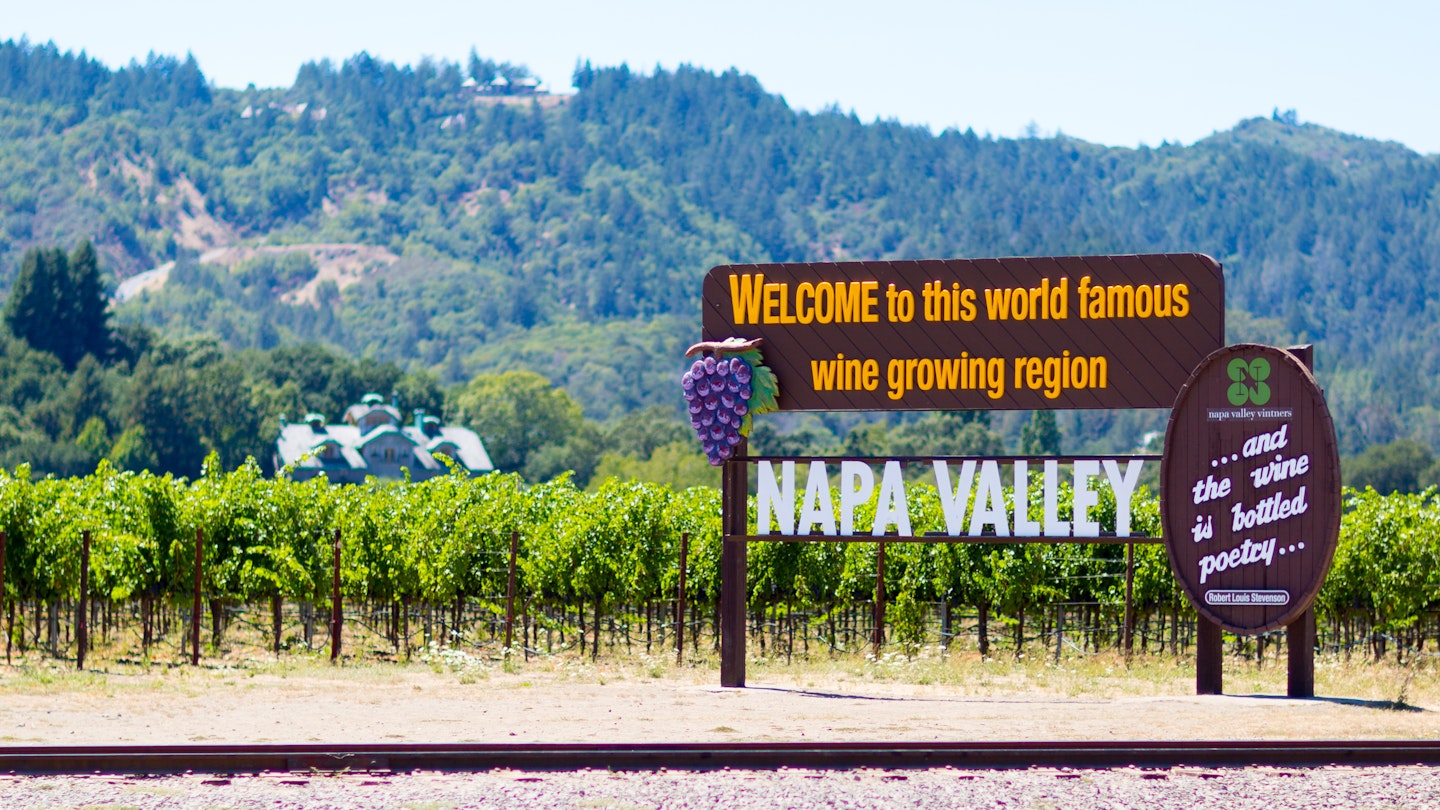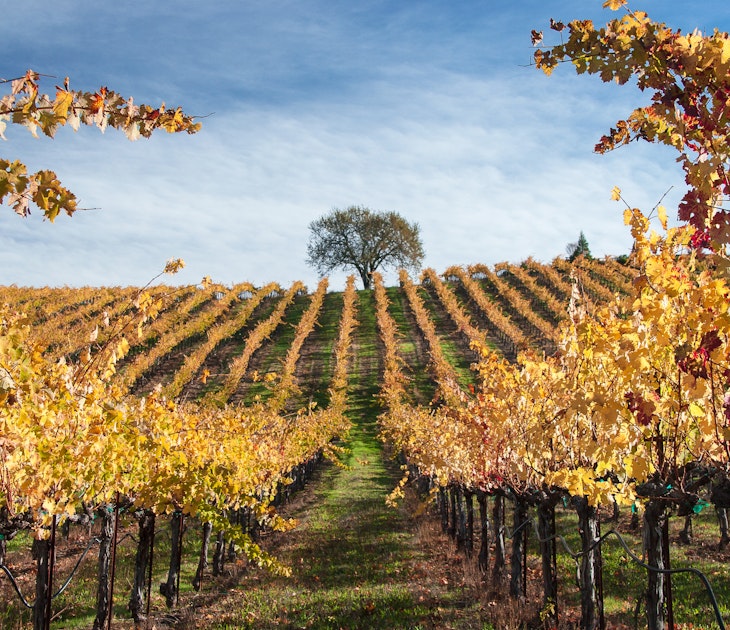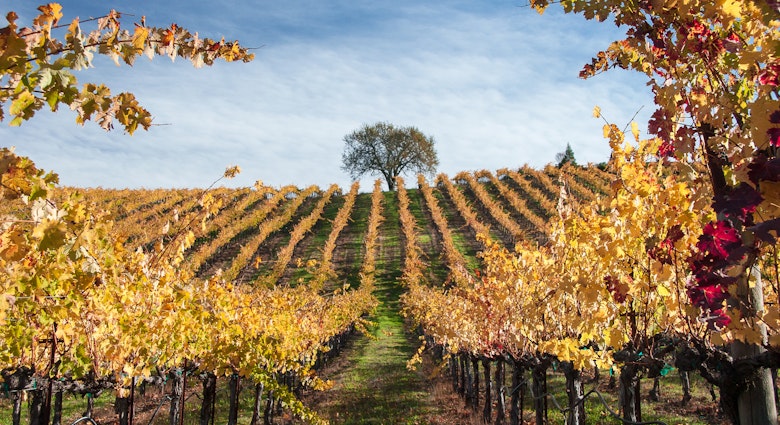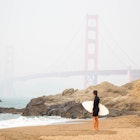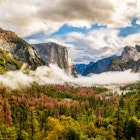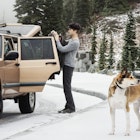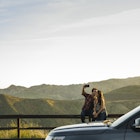Napa Valley is synonymous with luxury. Posh hotels, chef-driven restaurants and extravagant tasting fees cemented that reputation decades ago.
But at its core, Napa is farm country— a place where people dig in the dirt and make a living from the land. Despite all odds, this gives Napa a grounded feeling, even in its swankiest spaces. At the end of the day, visitors come to Napa Valley because they love food, wine and beautiful scenery. It’s a passion shared by the community of this incredible locale.
The five towns of Napa Valley (St Helena, Yountville, the city of Napa, Calistoga and American Canyon) are home to 16 wine appellations and more than 400 wineries. The options can be daunting to first-time visitors but we’re here to help. From mud baths in Calistoga to tips for visiting wineries, our first-timer’s guide to Napa Valley will give you everything you need to know to plan a trip here, including the best hotels, wineries, restaurants and activities.
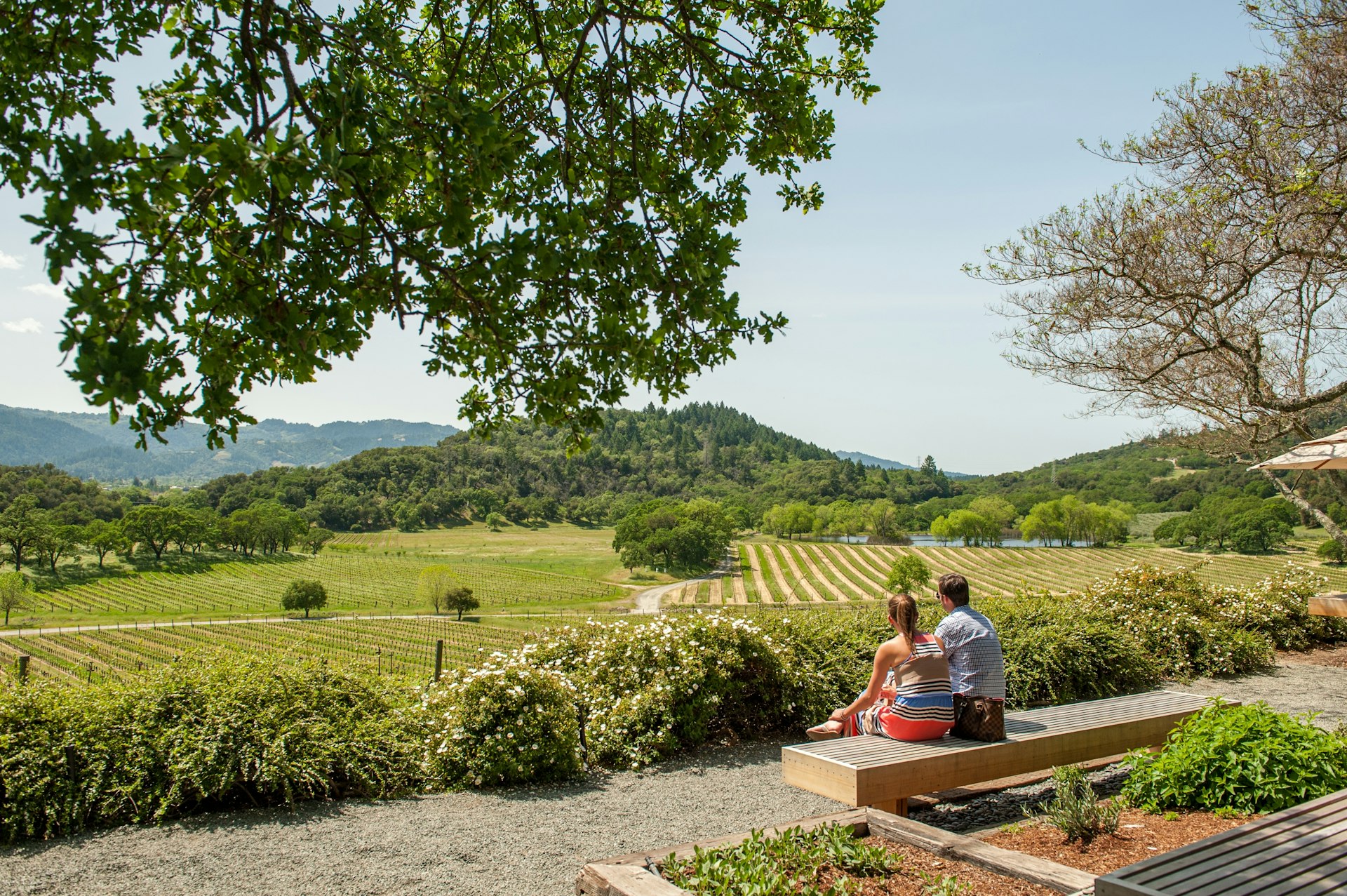
When is the best time to visit Napa?
It’s always a good time to visit Napa in our book, however, the timing of your trip will impact your experience. Peak tourist season is in summer when the average high temperature is 82°F. If you plan to visit this time of year, you’re unlikely to find any bargains. Make your reservations for lodging, restaurants and wineries as far in advance as you can.
Spring and fall are the next busiest times of the year. Spring brings average high temperatures of 68°F while in fall, high temperatures average 78°F. The lower, but still pleasant, temps are especially appealing for visitors who plan to hike, bike or engage in other outdoor activities.
Winter temperatures reach an average high of 60°F. This season gets the most rain (although this is California so there will still be plenty of dry, beautiful days). Since winter is the least crowded, it is the most affordable time to visit Napa with many hotels, resorts and spas advertising special packages and discounts off their regular rates.
How much time should I spend in Napa?
Set aside three to four days for your Napa Valley itinerary. This allows enough time to visit your top wineries and restaurants, plus time for other activities like spa treatments, hiking, lounging by the pool or riding the wine train.

What are the top things to do in Napa Valley?
Most people come to Napa to visit wineries – more on that later – but don’t overlook Napa’s exceptional culinary, wellness and recreation opportunities.
You can get filthy (in the best possible way) at the north end of the county in Calistoga. Calistoga is recognized around the world for mud made with a mixture of mineral-packed volcanic soil and water drawn from local hot springs. The two most common treatments involve painting it on your body or soaking in a tub of warm, nurturing mud. At least seven spas offer Calistoga mud experiences including the luxurious Spa Talisa at the Four Seasons Resort and Residences and the do-it-yourself mud bar at MoonAcre Spa and Baths.
Calistoga is also home to two of Napa Valley’s most unique natural attractions. The Old Faithful Geyser is a smaller, but still impressive version of Yellowstone’s most famous jet spout. In Calistoga, Old Faithful shoots hot water 30–80ft towards the sky every 10 to 20 minutes. Just outside of Calistoga at the Napa/Sonoma border, a three million-year-old petrified forest with 1.5 miles of hiking trails provides a fascinating glimpse at geological history.
No trip to the valley would be complete without a trip to downtown Napa’s Oxbow Public Market, a 40,000-sq-ft marketplace packed with locally sourced culinary delights. From California-grown olive oil at the Olive Press to artisan cheeses at the Oxbow Cheese and Wine Merchant, this is the place to stock up for a picnic or edible souvenirs. You’ll also find a bookstore, distillery, bakeries and restaurants. After you’ve finished browsing, find a seat on the riverfront deck out back to sample fresh oysters on the half shell from Hog Island Oyster Bar.
With menus centered around locally-grown ingredients, Napa is almost as famous for fine dining as it is for wine. Food this fresh is revelatory. A dish, such as fermented soy dip served with raw vegetables pulled from the ground at the Charter Oak, will ruin you forever for grocery store veggies. Other bucket-list dining experiences include the six-course prix-fixe chef’s tasting menu at La Toque, the daily tasting menu at the French Laundry, and Kenzo Napa, where seafood is flown in daily from the finest fish market in Japan. Please note that reservations at these restaurants are coveted, and should be made as far as possible in advance.
Don’t let these vaunted names fool you into thinking you need to spend a fortune to get a good meal in Napa. The valley is filled with scores of reasonably-priced restaurants including Heritage Eats in Napa where you can feast on comfort foods like a smoked ham bowl or white cheddar mac and cheese for less than $15 a person. For tasting menus, Thomas Keller’s ad hoc offers a daily tasting menu currently priced at $56 a person for lunch or $69 a person at dinner. The Gate House Restaurant at the Culinary Institute of America offers three courses prepared by student chefs for $35 at lunch or four courses for $45 at dinner (please note that restaurant prices are always subject to change).
For nightlife, the Blue Note Napa Jazz Club hosts an exciting mix of live performances ranging from household names to rising stars and tribute bands. It also holds the Summer Sessions outdoor concert series and the Black Radio Experience at the Meritage Resort and Spa. If you’re on the hunt for a good dive bar, Ana’s Cantina in downtown St Helena is the place for a game of pool, tunes from the jukebox and a stiff drink.
Other top activities in Napa Valley include hiking or biking the 12.5-mile Napa Valley Vine Trail, which will eventually extend 47 miles from Vallejo to Calistoga.

Tips for visiting wineries in Napa
Gone are the days when you can walk into virtually any Napa Valley winery and ask for a tasting without an appointment (or even a fee). Although there are a few wineries like Hall Wines in St Helena, where walk-ins are welcome, reservations are required at most wineries in Napa Valley. This helps ensure the wineries have adequate time to guide you through your tasting. From the guest's perspective, appointments are helpful when it comes to budgeting, arranging transportation and planning your Napa itinerary.
The average wine tasting fee in Napa Valley is $40 per person but it isn’t unusual for prices to climb to $200 or even more. Most wineries have a menu of tasting options, with standard tastings at the low end and premium experiences with food pairings, library wines, or guided tours commanding a higher price. Please note that the tip is not included in the tasting price so it will need to be factored into your budget.
Expect to spend at least 90 minutes at each winery (often longer for premium experiences). For this reason, it’s best to stick to no more than two or three tasting room visits a day. We recommend clustering each day’s reservations in the same area so you won’t have to rush between wineries. For instance, in the Stag’s Leap District, Cliff Lede Vineyards and Baldacci Family Vineyards are only a mile apart. Cliff Lede’s Backstage Lounge Tasting Room Experience offers an elevated tasting with premium wines in a room filled with rotating art and rare rock memorabilia. At Baldacci, the Cave Tour and Tasting Experience includes a cave tour and barrel tasting followed by a seated tasting paired with seasonal appetizers.
In the Rutherford area, Sullivan Winery is only half a mile from the Prisoner Wine Company. At Sullivan, the Merlot Mastery Tasting starts with a tour of the gardens and grounds before moving on to a seated tasting with two flights of its prized merlot accompanied by light bites. At Prisoner, you’ll find many culinary pairings including the Wine and Dim Sum Experience.
Attire is wine country casual. A pair of nice jeans, golf shirts, sundresses or casual blouses are the norm in Napa Valley. Do wear comfortable shoes, especially if you plan to walk through the vineyards or participate in a tour.
Expert tip: The Covet Pass offers complimentary tastings at seven Napa wineries and seven Sonoma wineries, plus additional discounts for a one-time fee of $150.

How to get around in Napa without a car
Napa Valley is 30 miles long and stretches at most 5 miles wide. In this sense, Napa is small and easy to navigate, but driving can be tricky in a destination centered around wine. Luckily, if you don’t have a designated driver there are several ways to get around Napa without a car.
The Napa Valley Wine Train offers several tasting journeys including a 36-mile roundtrip through gorgeous scenery to disembark for seated tastings at Charles Krug Winery and V. Sattui Winery. A four-course lunch is served onboard. You can also hitch a ride to three tasting rooms in an open-air San Francisco cable car on the Napa Valley Wine Trolley.
Many tour operators provide transportation to Napa wineries. Several, like Napa Valley Wine Country Tours, offer a choice between public group tours, which are less expensive, or private tours with a customized itinerary.
If you prefer to get around by foot, base yourself in the cities of Napa or Yountville. Napa has more than 50 downtown tasting rooms and there are 14 walkable tasting rooms in downtown Yountville.
Where to stay
If there was ever a place to treat yourself to a nice hotel, it’s Napa Valley. The region is home to some of the best hotels in the country, with grounds and accommodations so astonishingly beautiful you might not want to leave to go wine tasting (but definitely leave to go wine tasting). If you’re in the position to splurge our top picks are:
The Poetry Inn is an exclusive property with only five guest rooms and a small, on-site spa. The all-suite hotel is the epitome of privacy and luxury with huge guest rooms featuring private sitting areas, outdoor patios, and indoor and outdoor showers with stunning hillside or vineyard views. A gourmet multicourse breakfast is included with each stay. Poetry Inn is the only hotel in the Stag Leap district.
Meadowood Napa Valley in St Helena is set on a magnificent 250-acre estate with mature, oaks and native plants surrounding 36 suites and guest rooms with soaking tubs and private outdoor sitting areas. Hiking trails, tennis courts, swimming pools, a Wine Center and a tranquil spa ensure you’ll never lack activities during your stay.
Carneros Resort and Spa offers standalone cottages and homes surrounded by rolling hills and vineyards in Napa. Amenities include a luxurious onsite spa, two swimming pools, pickle ball courts with an adjacent Veuve Clicquot Champagne Bar and Lounge, a complimentary buffet breakfast, and access to Cadillac Luxury Vehicles during your stay.
If a mid-range hotel is better suited for your budget we recommend the Meritage Resort and Spa or Silverado Resort. The Meritage offers perks like a complimentary shuttle service to downtown Napa and a verdant lawn surrounded by tasting rooms and an upscale market. At the Silverado Resort, amenities include golf courses, bocce ball courts, a pool and a fitness center.
The most affordable lodging options in Napa Valley are generally found in American Canyon, which offers several reliable, reasonably-priced chains such as the DoubleTree by Hilton Napa Valley American Canyon and Holiday Inn Express and Suites Napa Valley American Canyon.

My favorite thing to do in Napa
When I come to Napa I love to take a class to enhance my appreciation of food and wine or learn a fun, new skill. I’ve never been anywhere else where classes are so varied and accessible, so I take advantage whenever I can. Often, these classes are offered directly through my hotel. The Wine Center at Meadowood Napa Valley runs classes ranging from introductory tutorials on Napa wine to advanced courses on subjects like the history of the wine label. Carneros Resort and Spa has a dazzling array of daily classes focusing on everything from sabering champagne bottles to pickleball.
The Culinary Institute of America is my hands-down choice for cooking classes with options for group or private instruction. I’ve also found classes offered at Napa Valley wineries. Bouchaine Vineyards regularly hosts an exciting roster of sessions on topics like pairing wine and cheese, blending wine and even falconry.
How much do you need to budget for a trip to Napa?
The amount you’ll need to spend on a trip to Napa is highly variable depending on your itinerary and even the season you choose to visit. Although it is generally considered a luxury destination, you can still plan an affordable trip to Napa with the tips and tricks in this first-timer’s guide. The numbers below are not definitive but will provide a general idea of how much it costs for budget-conscious, midrange, and luxury travelers to visit Napa.
- Hotel room for two: $100–1200 a night
- Rental home/Airbnb for two: $200–1000 a night
- Wine tasting fees: $25–250 per person at each winery (not including tip)
- Lunch for two: $30–100 per person
- Dinner for two: $100–300 per person (or more)
- Glass of wine: $13–50
- Bottle of wine: $108 average
- Group shuttle to wineries: $125 per person
- Private transportation to wineries: $600 (and up)
- Spa treatment: $100–400 per person (and up)

